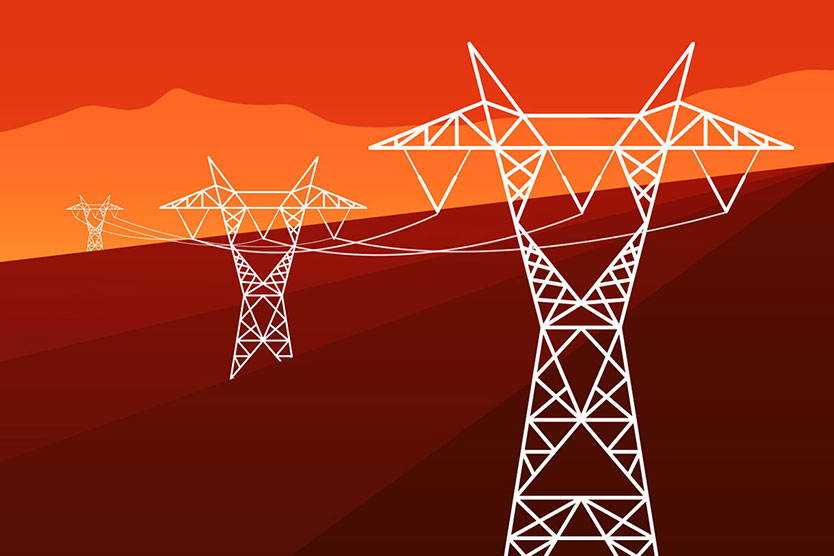
Power grid lines can become more unstable when upgraded or through addition of new lines.
© BMWi
The integration of renewables into Germany’s power networks and the transportation of electricity over long distances requires substantial grid expansion and investment into grid stability. However, one of the unintended side-effects of upgrading existing lines, or adding new ones, can be that the grid becomes more unstable.
This effect is known as the Braess Paradox, a phenomenon first identified by the German mathematician Dietrich Braess, who observed its effects in road networks. Under certain conditions, he found that adding a new road can lead to longer transit times for users. Now an international study is underway to study this effect on the grid, and to develop a prediction tool that supports grid operators in handling it, or at least taking it into account.
"We speak of the Braess Paradox. This states that an additional option, instead of improvement, leads to a deterioration of the overall situation," explains Professor Benjamin Schäfer, head of the DRACOS research group at the Karlsruhe Institute of Technology (KIT), a key partner in the research, speaking to Innovations Report.
In detailed simulations, this team created and observed the phenomenon and then demonstrated it on a larger scale in Germany’s AC grids. One of the key considerations is circular flows. Schäfer explains: "Due to conservation laws, there is effectively a new circular flow as a result, and more current flows in some lines and less in others. This becomes a problem when the line that is already the most heavily loaded now has to carry even more current, so the line is overloaded and has to be shut down. This makes the grid more unstable, and, in the worst case, it collapses."
Most grids have enough capacity to withstand the Braess effect, but KIT’s research supports decisions that have to be made at short notice, for example, when closing lines or shifting power plant output. The prediction tool provides practical guidelines to plan grid expansions sensibly and support overall stability.


